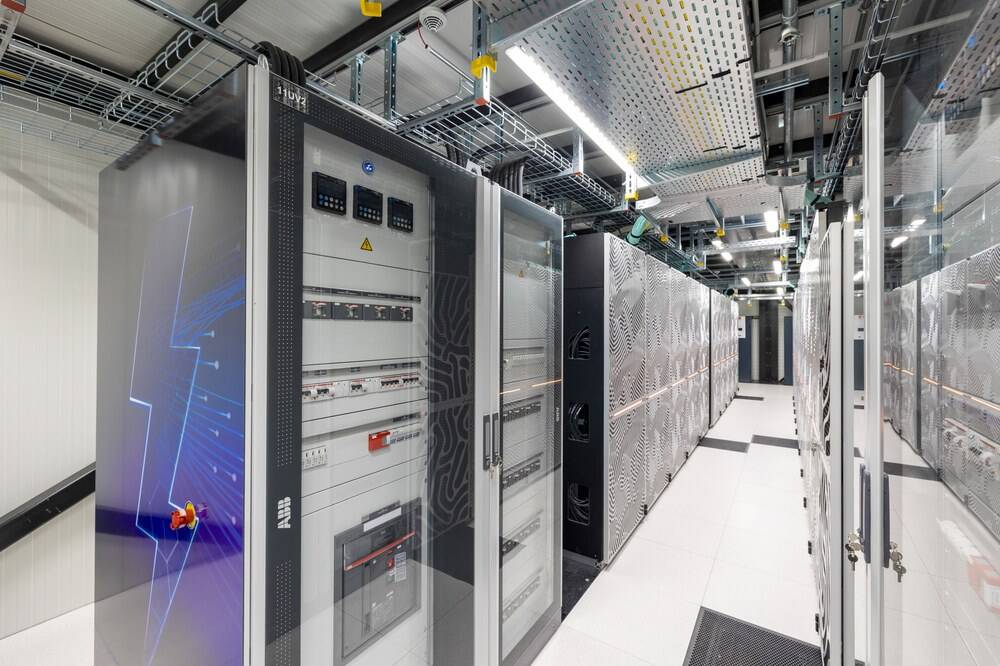video Europe’s first exascale supercomputer has finally lived up to expectations, despite not being fully complete, as its general-purpose compute cluster is not set to be ready before next year at the earliest.
The long-awaited Jupiter system was officially inaugurated on Friday at the Jülich Supercomputing Center near Köln (Cologne) in Germany, and has surpassed the exascale threshold of one quintillion (10¹⁸) operations per second, according to the European Commission.
Friday’s inauguration was effectively that of Jupiter’s Booster module, a GPU cluster intended for handling large-scale simulations and AI training. It comprises roughly 6000 compute nodes, each featuring four of Nvidia’s GH200 Grace Hopper superchips, and interconnected using the GPU-flinger’s Quantum-2 InfiniBand networking gear as well.
It’s lucky that the system managed to hit the exascale threshold for its inauguration ceremony, isn’t it? (Sorry, we couldn’t resist being snarky.)
In attendance were German Chancellor Friedrich Merz, the Federal Minister for Research, Technology, and Space Dorothee Bär, North Rhine-Westphalia’s Minister-President Hendrik Wüst, and Minister for Culture and Science Ina Brandes.
The Jupiter system had already taken the crown of Europe’s most powerful computer system and the worldwide fourth fastest back in June, while its Jedi test module made the top of the Green500 table of the world’s most energy-efficient supercomputers a year earlier.
“With Europe’s first exascale supercomputer, we are opening a new chapter for science, AI and innovation,” said Ekaterina Zaharieva, European Commissioner for Startups, Research and Innovation.
Jupiter strengthens Europe’s digital sovereignty, accelerates discovery, and ensures that the most powerful and sustainable computing resources are available to the region’s researchers, innovators, and industries, she added.
Europe is trailing in the wake of the US here, which achieved exascale level with the Frontier supercomputer at Oak Ridge National Laboratory three years ago, then again with Argonne National Laboratory’s Aurora supercomputer last year and Lawrence Livermore National Lab’s El Capitan system later the same year. China is also believed to have exascale systems, but is keeping quiet about them.
The UK was planning for an exascale supercomputer of its own, to be based at Edinburgh University, but the incoming Labour government cancelled it to save cash last year, then reinstated it earlier this year, but isn’t referring to it as an exascale cluster anymore.
Jupiter’s general-purpose Cluster Module is set to target workflows that do not benefit from accelerator-based computing – in other words, mainly CPU-based code. It will be based on the Rhea1 processor from Euro chip biz SiPearl, which only taped out the final design for it in July this year.
The first sample silicon is set to be available in early 2026, meaning that the Cluster Module is expected later the same year.
Rhea1 is an 80-core chip based on Arm’s Neoverse V1 cores, and it is understood that the Cluster Module will feature two such processors per compute node and comprise a total of 1,300 nodes.
Jupiter’s systems are housed inside a high-performance modular datacenter consisting of about 50 container modules and covering more than 2,300 square meters – roughly the equivalent of half a soccer field. This arrangement is intended to allow the system to be easily reconfigured or expanded.
This first exascale system for Europe is being built by the ParTec-Eviden consortium, where Eviden is the compute division of troubled Atos Group.
The total cost for Jupiter and operating it over six years is estimated to amount to €500 million ($587 million), half of which is being met by the European supercomputing initiative, EuroHPC JU, while the rest will be covered by the German Federal Ministry of Education and Research (BMBF) and the Ministry of Culture and Science of the State of North Rhine-Westphalia (MKW NRW). ®

